The Ultimate Guide to Buying a Lawn Mower
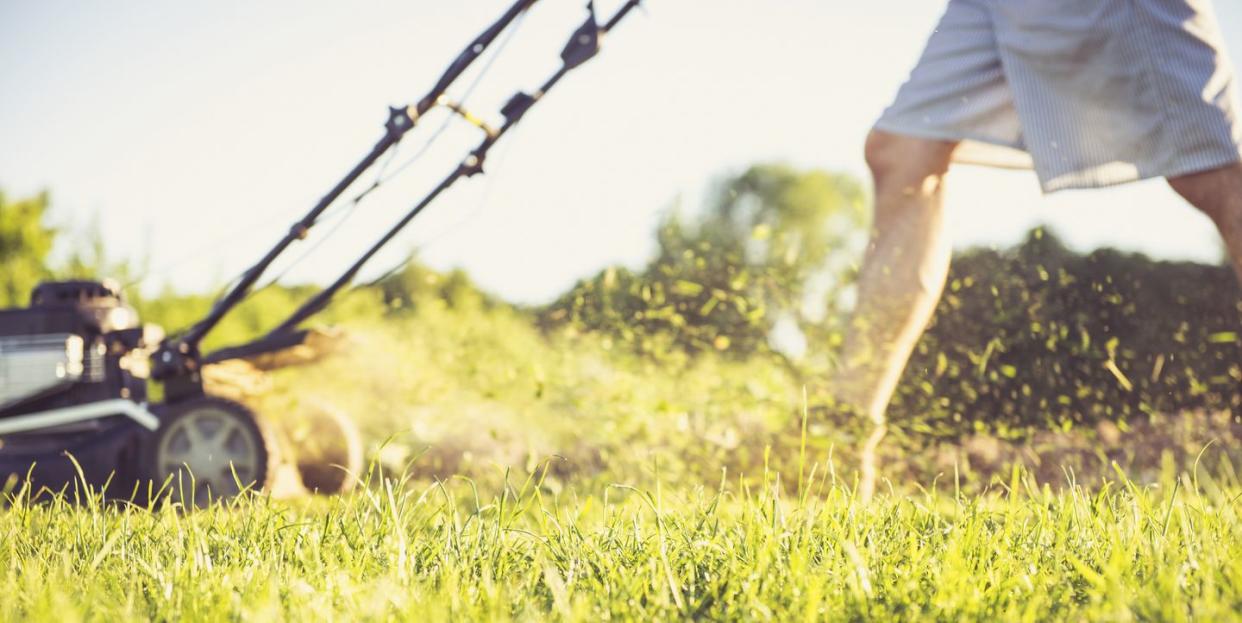
Nothing kills the joy of a sunny day like the wrong type of lawn mower. Fortunately, the opposite is also true. The right type of lawn mower can make cutting your lawn a pleasure.
If you know you need a new lawn mower, but aren't sure how much mower you need or what features you might want, don't worry. We've got you covered. Use this guide to select the right machine, and happy mowing.
Step 1: Walk or Ride?
The first step is the choice between two basic types of lawn mowers: riding mower and a walk-behind. Any more ground to cover than a 1/4 acre, you'll want to ride if for no other reason than to get the lawn done faster.
First, make an approximation of your mowing surface. Simply walk off large rectangles , counting your steps as you go. Add up the areas of the rectangles. No need to get too precise here. An average man’s stride is about 30 inches and a woman’s stride is about 26 inches, or measure your own stride for the most accurate measurement.
An acre is 43,560 square feet, so one-fourth acre is 10,890 square feet. Anything above that threshold, and you'll likely want to get a riding mower. In fact, the vast majority of people wouldn’t dream of cutting a ? acre of grass with a 22-inch walk mower, but we have to start somewhere. So think realistically about how much time you have to mow your lawn on a busy weekend and select your equipment accordingly.
For lawns from ? of an acre to 2 acres , you'll most likely be most comfortable with a rear-engine riding mowers, light-duty lawn tractors, and residential-duty zero-turn mowers. Anything more than two acres and you'll want a commercial-duty zero turn mower.
Step 2: Selecting Your Features
Once you’ve selected whether you ride or walk, there are two factors that will drive your purchase—your budget and your comfort. The more you spend on a mower, the more durable, versatile, intuitive, and probably, the quicker you’ll get the job done. The opposite is also true.
It doesn’t make as much difference with a small, simple yard. But the larger and more complex the yard, the more thought you need to give to selecting mower features.
Walk Mowers
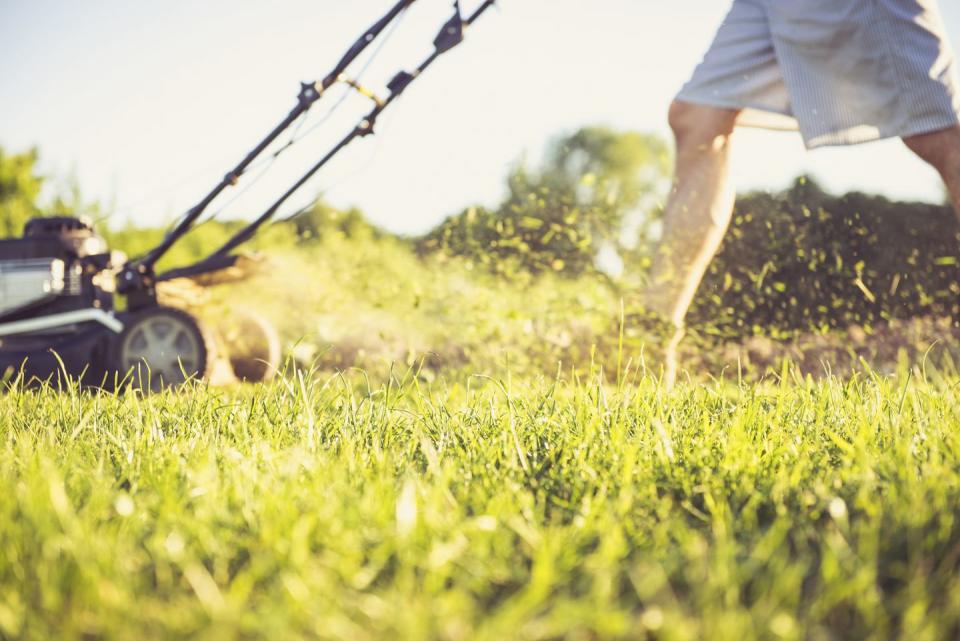
We'll begin with walk mowers , one of the most versatile cutting machines out there.
Walk mowers are somewhat like cars in that they are available with a wide range of options, all of which increase cost and complexity. Look carefully at the product's hang tag and talk to the sales staff to get a better sense of whether the features are useful to you.
Let's break down all the major components and what lawnmowers use them:
Drive
Look it at this way: You can push a mower, or the mower can push itself, in which case it’s either a front-drive or a rear-drive mower (we’ll get to all-wheel drive in a moment). A self-propelled mower makes your life a lot easier when mowing hills, or when you mow and bag. There’s nothing like pushing a fully loaded mower uphill to make you appreciate a self-propelled machine.
Front-wheel drive is best for level ground with a lot of obstacles. This allows you to push down on the handle, reducing traction on the front wheels and pivot into and out of corners.
Rear-wheel drive works best for for uphill mowing and sidehill mowing. Rear wheel drive works better here because when you push down on the handle going up a hill, the front tires will not lose traction.
Yes, a handful of mowers are all-wheel drive , built for homeowners who cut across washboard surfaces, sidehill mowing, steep uphill and downhill mowing that makes good of AWD. We were dubious when these mowers were introduced several years ago, but when we cut some very rough ground, we were surprised at how much easier AWD made things.
Functions
In this section, we're talking about what the machines actually does with the grass. Mowers can mulch clippings (repeatedly cut and recut them), discharge them to the side or rear, or bag them.
Two-function is a mower that mulches and bags. Mulching is healthier for the lawn in that it returns nitrogen-rich grass clippings into the ground, but it doesn’t work particularly well for tall-grass conditions in the spring and early summer or early fall when the lawn bounces back from summer stress.
A three-function machine bags, mulches, and side discharges. Side discharging is useful for utility mowing (mowing areas with tall weeds and non-turf grasses). It also helps if the lawn gets away from you and you need to set the mower deck to its full height and take the grass down in stages.
Common Features
We've barely scratched the surface of mower features. These are the more common things you'll find on your average mower's spec list:
Deck levers come in groupings of one, two, or four. One lever is the most convenient, but it comes with a lot of linkage that adds weight and that you have to keep lubricated if you want it to work well. Two levers are a good compromise between one and four levers. Yes, these mowers have a bit more linkage than a four-lever mower, but it’s easier to get the height right. Four levers is the standard, time-tested design.
The only way to get a sense of whether you’ll like the ground speed control is to actually get your hands on a mower at a dealership, hardware store, or home center.
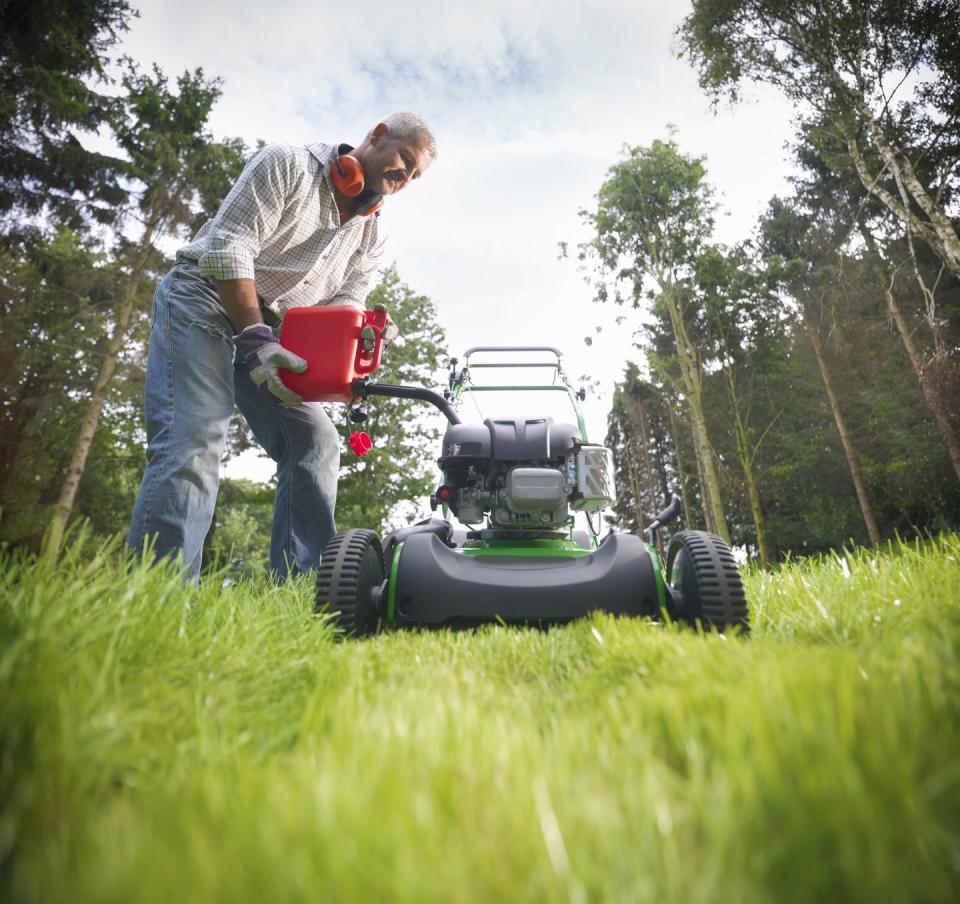
The control may be integral with the handle. The harder you press forward on the drive control in the handle, the faster the mower goes. Or it may be a separate lever or even a bail (a metal rod). Squeeze the lever to increase ground speed or to activate the mower’s drive system for fixed-speed mowers.
Self-propelled mowers are equipped with three types of transmissions . Hydrostatic is the most expensive and the smoothest operating. It drives hydraulic fluid past an impeller that spins an output shaft, which controls ground speed. This is your smoothest running and most reliable transmission, but it’s also the most expensive.
The typical front or rear drive walk mower uses some form of belt-and-pulley arrangement to direct power from the engine’s output shaft to a gear box on a front or rear axle (or a gear at the wheel). There are several variations of this design, but all work well and are reasonably easy to maintain and repair.
Gas engines sizes run from 140 cc to 190 cc. Larger engines produce more torque and are less likely to stall in tall grass at the beginning and end of the cutting season. A larger engine also helps drive self-propelled mowers more effectively uphill.
From least-expensive to most-expensive, mower engines may be traditional side valve design, overhead valve, or overhead cam. More expensive engines provide increased durability, reduced noise, and less oil consumption.
The rear wheel size of a walk mower may be larger than the diameter of the front wheels. The wheels’ increased diameter helps it more easily navigate ruts and rough ground.
Ball bearing wheels are easier to push than those with bushing-type wheels. The larger your yard, the more difficult its terrain, or if you're hauling around a bag of clippings or clippings mixed with mulched leaves, the more you want this option.
A blade-brake clutch is a feature found on high-end walk mowers. It allows you to completely release the operator control handle without stopping the engine. That way, you can pause your mowing, move whatever obstacle out of your way and continue mowing without having to restart the engine.
Unusual Features
A range of unusual features have been introduced in the last several years to make mowing easier or the whole mowing experience better.
Some engines require no oil change , like the small gas engines made by Briggs & Stratton. The feature is known as “Just Check and Add.” You just add oil periodically to replace the small amount of oil that’s slowly vaporized in the combustion process.
Toro’s innovations have created mowers that have power-assisted reverse and a vertical-storage design that lets you fold the handle down, tip the mower back, and store it vertically against the wall.
Front caster wheels are great for elaborately-landscaped yards that require a lot of pivoting. Front caster wheels don’t track particularly well on bumpy ground or mowing sidehills. Mowox mowers have replaced dual front casters with a single front caster wheel, perhaps the most maneuverable form of mower you can get. But Cub Cadet has been among the mower manufacturers that pioneered the use of front caster wheels.
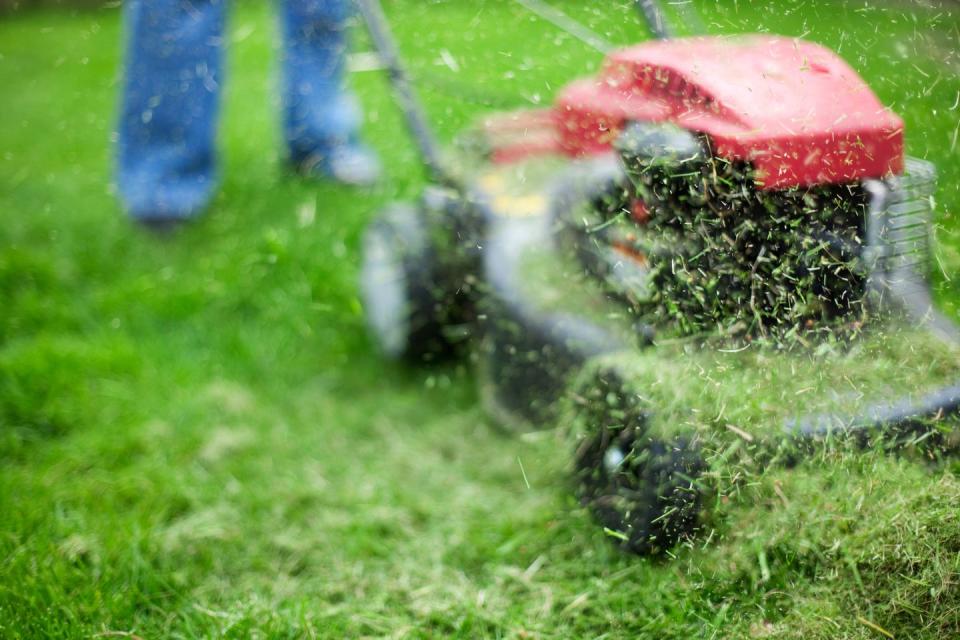
Wash-out fittings enable you to hook up a garden hose to wash accumulated grass clippings from under the deck. A clean deck lasts longer because accumulated grass holds moisture and lawn chemical residue, which causes deck corrosion. Our tests show that these fittings do help considerably, but that you still need some under-deck scraping with a putty knife.
Wide-cut mowers with decks that range from 28 to 33 inches are a fast cutting alternative to a 22-inch mower. These are still comparatively rare products made by Cub Cadet, Toro, Troy-Bilt, and Craftsman.
Finally, electric walk mowers are a perfect fit if you have a small yard (under 5,000 square feet of mowing surface) and one that’s quite manicured. However, there are three important things to keep in mind:
Cordless electric mowers tend to have smaller decks (19 and 20-inch sizes are the most common, though a few have 21-inch decks). That means it takes you longer to mow.
They tend to be less powerful than their gas engine counterparts. They can struggle with tall grass, wet grass, and thick grass with leaves. For intermediate mowing conditions, cordless mowers do just fine.
The larger the lawn, the more batteries you need. Manufacturers make recommendations about run time, but that’s very difficult to do accurately. It varies widely depending on your mowing habits and the height or thickness of the grass. We recommend you buy extra batteries so that you’re not compelled to rush the cut.
Ride Mowers
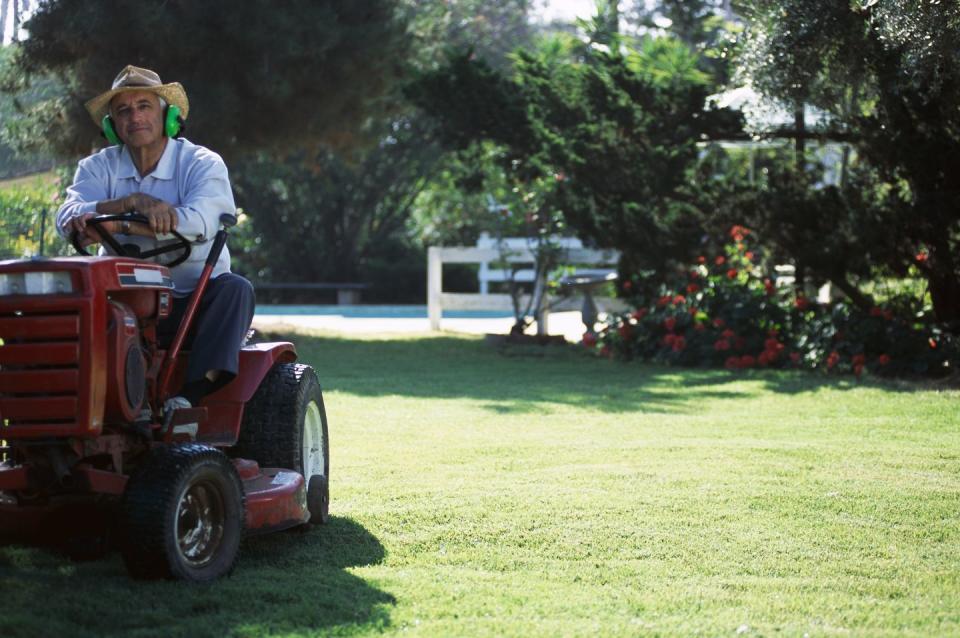
If you can afford it, a riding mower is the way to go. Don’t get us wrong, we love walk mowers (goodness knows, we’ve used enough of them over the years here). But for speed and efficiency, there’s simply no comparison with a riding mower when you’re talking a large lawn.
When looking at riding mowers, you'll likely come across three versions—lawn tractor, rear-engine riding mower, and a zero-turn mower. Let's break them done one by one:
Lawn Tractor
Many people start out with a lawn tractor. With a steering wheel and a front-mounted engine, these look and feel familiar. Engine size range from 18-25 hp and most come with a single cylinder with step-up models having a V twin. Some fancier models also feature engines with electronic fuel injection.
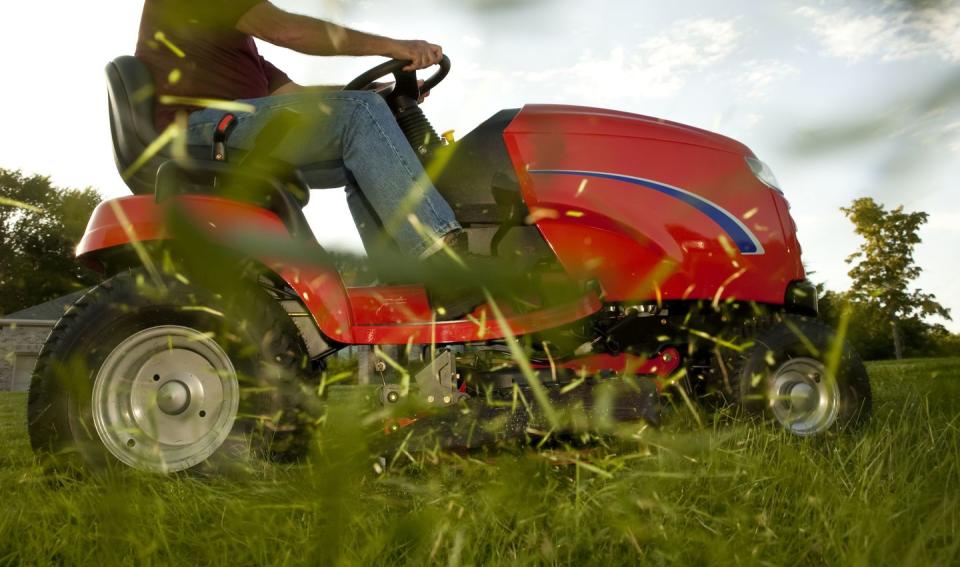
When it comes to transmissions, less expensive models tend to be lever-operated gear transmissions. But a step-up from there comes pedal hydrostatic or continuously variable transmission (CVT) operated by a shift-on-the-go hand lever. The CVT is an automatic transmission powered by pulley drive to a sealed and lubricated gear case. You know you're spending serious money if you're considering a more expensive tractor with a heavy-duty foot pedal hydrostatic transmission.
Finally, how much can it cut? Well, much more than a push mower. Deck widths range from 42 inches to 54 inches. To know what size you need, divide the mower deck size by 12 to get an approximation of the acreage the mower can handle. So residential-duty a mower with a 54-inch deck can mow up to 4.5 acres. That’s a lot of grass and would result in significant wear and tear on a residential-grade mower in the course of the season. Still, it could do it.
These kind of mowers range anywhere from $1,300 to $3,000.
Rear-Engine Riding Mower
Many people with larger lawns too big for a walk mower but too small for a tractor or a zero turn should go with a rear-engine riding mower. The specifications below apply to deck under the operator’s position and not rear-engine residential/commercial mowers with the deck in front of the operator.
Most rear-engine mowers a single-cylinder engine ranging in size from 344 to 38 cc, estimated at 10 to 11 hp. The transmission is usually a CVT operated by a shift-on-the-go hand lever. Snapper’s famous rear-engine riding mower uses the company’s time-tested disc drive transmission, but a few rear-engine riders are offered with a hydrostatic transmission.
Deck sizes stretch anywhere from 30 to 33 inches, and operators use a manual hand lever for deck adjustment and deck engagement. That small cutting size also means a smaller price tag, ranging from $1,200 to $2,400.
Zero-Turn Mowers
In the last twenty years or so, zero-turn mowers have proved their worth to homeowners and landscape contractors alike. Their design enables forward speed and steering by means of dual hydrostatic transmissions at the rear wheels, each of which is controlled by a lap bar in front of the seat.
A pulley off the engine spins the impellers on the dual hydrostatic transmissions that power the rear wheels. When you move one of the lap bars farther forward than its neighbor, it acts as a throttle, allowing more hydraulic fluid to flow to the transmission at that wheel. This causes wheel to turn more rapidly than the opposite wheel, allowing you turn corners or pivot.
Engine size can range from 452 cc up to 700 or more, with power estimated from 12 hp to 25 hp. This is powered by either a single cylinder or commercial-duty V twin, and transmissions are either hydrostatic or commercial-duty hydrostatic.
With deck sizes ranging from 32 inches to 60 inches, these mowers cut the most grass in the least amount of time. The decks are either stamped or heavy-duty fabricated, deck adjustment uses a manual hand lever or foot pedal, and deck engagement uses a manual hand lever or an electric PTO
All that grass-cutting power comes with a price, usually ranging between $1,200 to $6,000.
You Might Also Like
